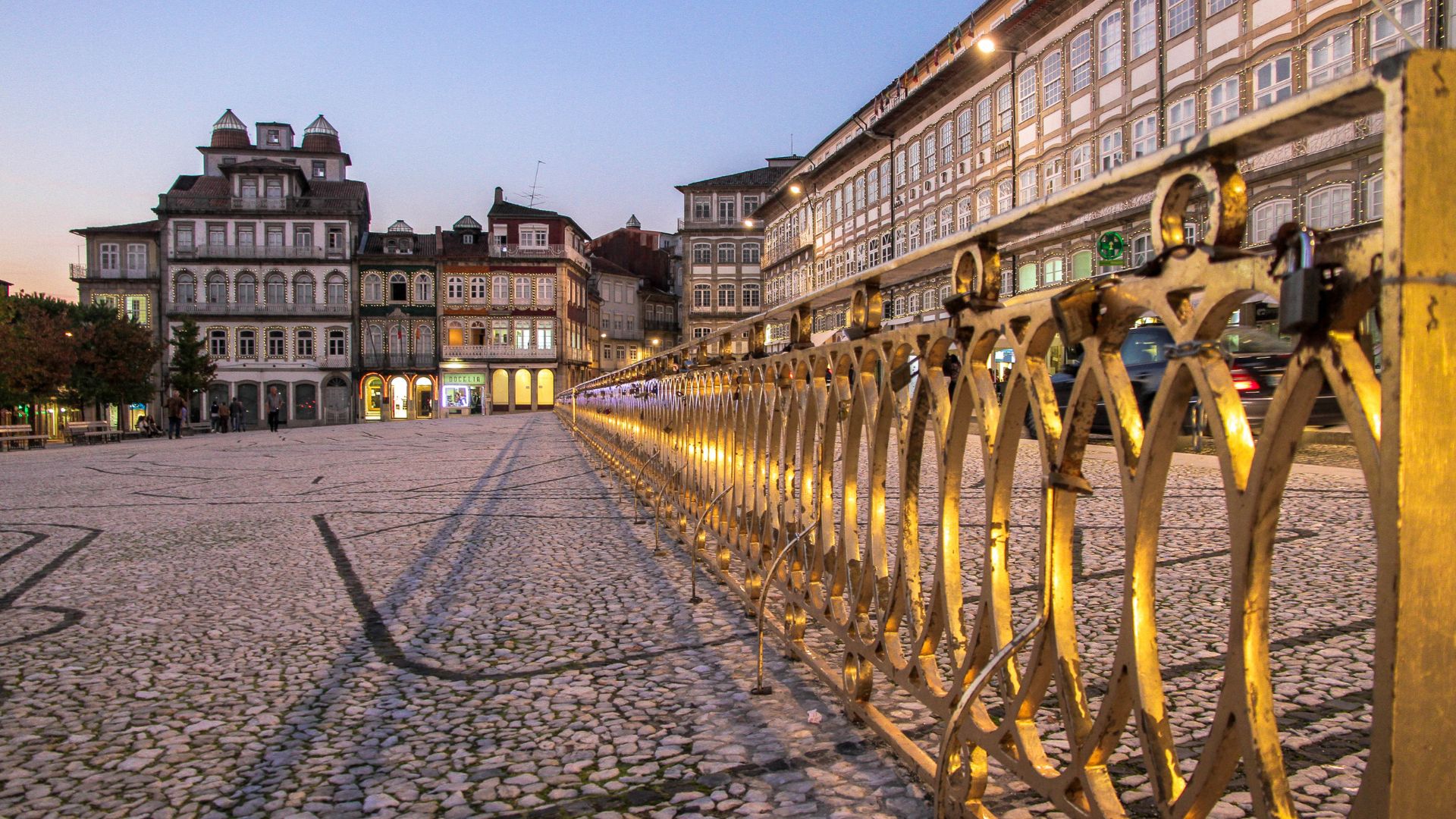When I walked through Centre Portugal, I felt surrounded by layers of time. Ancient Roman ruins whispered old secrets, and Manueline architecture carved with sailing ropes and sea creatures jumped out at me around every corner.
Exploring these sites, I realized how Centre Portugal’s architecture blends past and present in ways I haven’t seen anywhere else.
I strolled through places like the Monumental Complex of Santiago da Guarda. There, you can almost step from a Roman villa into a Manueline manor house just by crossing a room.
Even in small towns, reminders of empire and discovery popped up everywhere. Every street felt like a lesson in Portugal’s story.
If you’re a traveler who loves hidden gems and real history, Centre Portugal will probably amaze you too.
Every structure seems to tell a tale—from weathered Roman baths to the ornate beauty of grand Manueline churches. Here, you don’t just see history—you feel it under your feet.
Tracing Ancient Footsteps: Portugal’s Roman Legacy
As I wandered Centre Portugal, I felt the pull of Roman history beneath my feet. Ancient ruins, grand temples, and stone roads still crisscross the landscape, connecting us to the empire that once called this place Lusitania.
These sites don’t just tell stories—they show how Roman design and culture still influence Portugal today.
Exploring the Roman Ruins of Conímbriga
Conímbriga, just outside Coimbra, stands out as one of the most impressive Roman settlements I’ve ever seen. The site sprawls across several hectares, and it’s easy to picture life here nearly two thousand years ago.
The mosaics blew me away—so many colors, still vivid after all this time. The remains of once-grand villas hint at the wealth and style of their owners.
I wandered the old stone streets and passed the ruins of a Roman forum, public baths, and a partially restored aqueduct. Each spot let me peek into daily Roman life—trading, bathing, socializing under the Mediterranean sun.
The Archaeological Museum on site displays artifacts, from Latin inscriptions to household items found during digs. I spent a while reading about Emperor Augustus and how Lusitania changed under his rule.
Conímbriga’s walled city layout and clear neighborhoods set it apart from other ruins I’ve visited in Portugal.
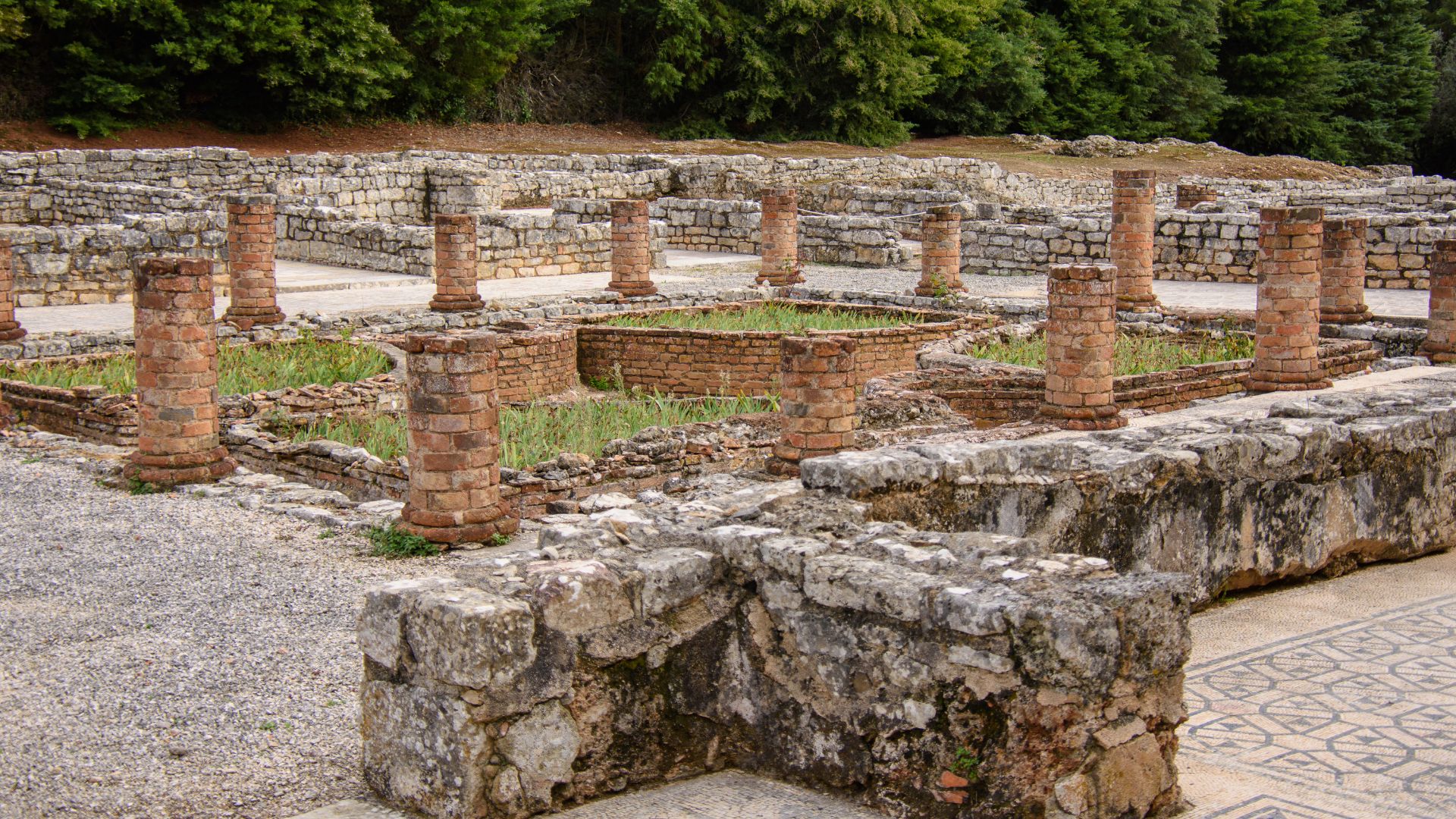
Temple of Diana and Roman Temple of Évora
Évora has some of Portugal’s best-preserved Roman ruins, and the Temple of Diana stands tall in the city center. Its granite columns shoot skyward, still elegant after all these years.
I was honestly surprised by how well the structure survived—apparently, it served as a medieval slaughterhouse, which is odd but probably saved it.
Inside, a plaque tells the temple’s story. It was likely built in the first century AD, even though its name references Diana, the Roman goddess of the hunt.
Most historians think it was dedicated to Emperor Augustus.
All over Évora, you’ll spot Roman reminders. The nearby Roman Baths and pieces of the city wall are worth a look. They create a direct link between modern Évora and its ancient roots.
Every stroll here feels a bit like time travel.
Temple of Diana Quick Facts:
| Location | Évora, Portugal |
| Built | 1st Century AD |
| Dedicated to | Likely Augustus |
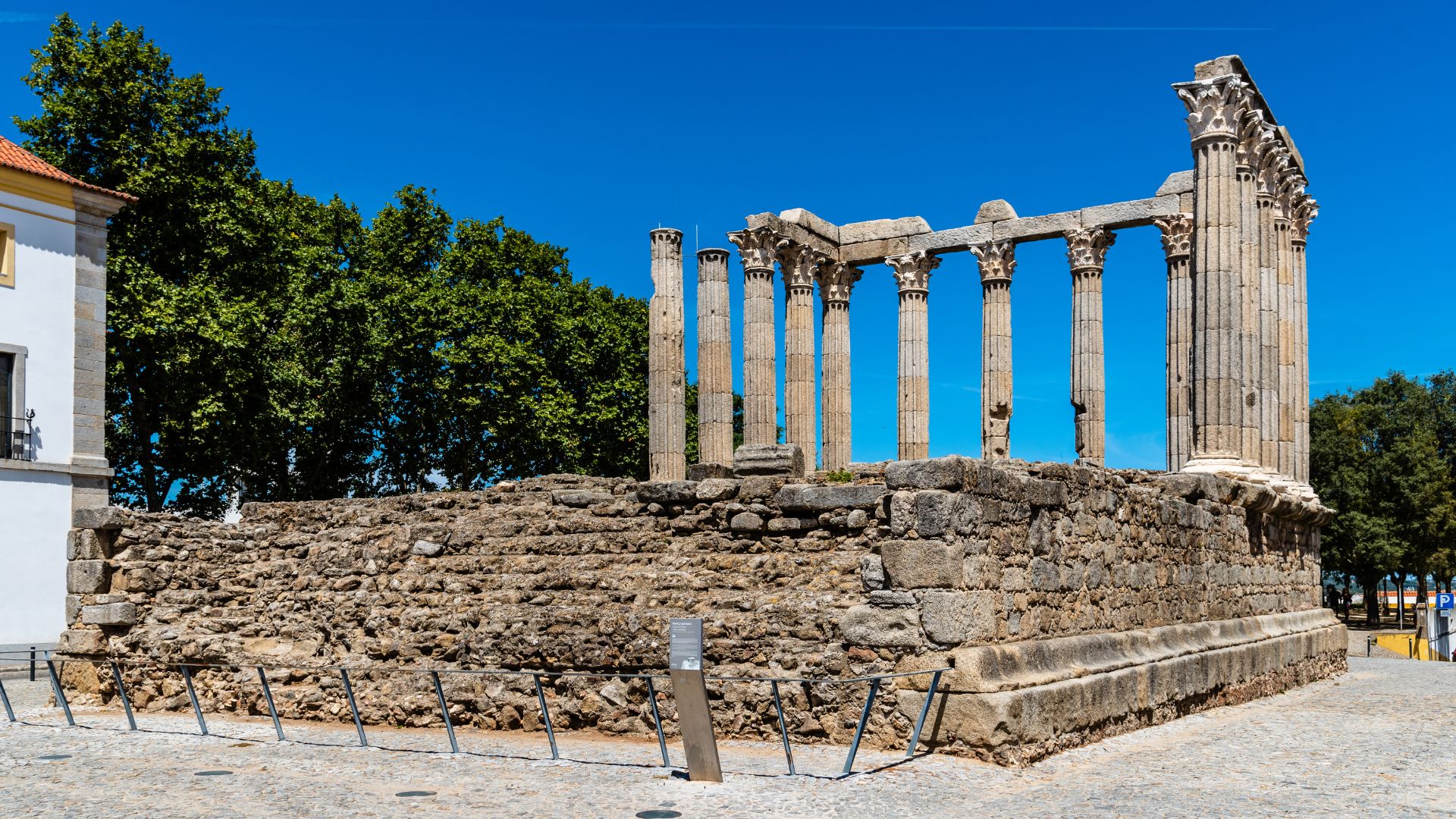
Citania de Briteiros and Beyond
As I explored Portugal, I stumbled onto Citania de Briteiros—a unique archaeological site north of Centre Portugal. This hillfort overlooks green valleys and feels totally different from the Roman cities.
The settlement started in the Iron Age but thrived under Roman influence. You’ll see stone houses, streets, and city gates winding across the hill.
I loved seeing the blend of cultures here—Celtic roots mixed with Roman touches. The circular houses and forums show a society adapting to Rome while keeping old traditions alive.
Information boards dot the site, explaining its layers of history, including how Latin took over in government and trade.
If you’re into Roman settlements, check out the Roman ruins of Tróia on the western coast. These lesser-known places reveal the daily lives of people living at the edge of the empire.

Uncovering Roman Forums, Roads, and Aqueducts
Portugal’s Roman legacy isn’t just about grand monuments. I kept finding it in the networks that once connected people and places.
The remains of Roman roads near Conímbriga amazed me—scholars have mapped them like ancient subway lines.
As I walked these routes, I pictured merchants, soldiers, and messengers making their way between towns like Coimbra and Lisbon. The stones felt worn smooth from centuries of footsteps.
Several towns across Centre Portugal still have pieces of Roman forums—columns and stone platforms where people once debated laws and regulated trade.
Aqueducts in cities like Évora stretch across the landscape, their arches a testament to Roman engineering. Some still work, at least partly, blending the past with modern life.
It’s wild to think how advanced Roman infrastructure was for its time.
Travel Tip: Wear sturdy shoes for exploring stone-paved Roman roads and uneven ruins. Most sites have bilingual signs in Portuguese and English.
Medieval Wonders and Islamic Echoes
In central Portugal, I kept finding the blend of medieval creativity and Islamic heritage everywhere I went. Stone fortresses perched on misty mountains, soaring cathedrals, and quiet cloisters all told different chapters of history.
The mark of the Moors, bold Gothic architecture, and the quiet power of Romanesque churches shaped every step of my journey.
Castelo dos Mouros and Sintra’s Cultural Landscape
The Moorish Castle, or Castelo dos Mouros, snakes along a hilltop above Sintra, surrounded by a sea of green. The views over the Sintra Mountains stopped me in my tracks—the Atlantic shimmering in the distance, palaces peeking between the trees.
I traced stones first set by Islamic builders in the 8th and 9th centuries. The castle’s towers and battlements once guarded trade routes, and even now, the air feels hushed and watchful.
Sintra’s Cultural Landscape is a UNESCO World Heritage Site, and this fortress is one of its proudest features. I lingered in the shade of mossy walls, imagining life during Islamic rule and feeling history come alive beneath my feet.
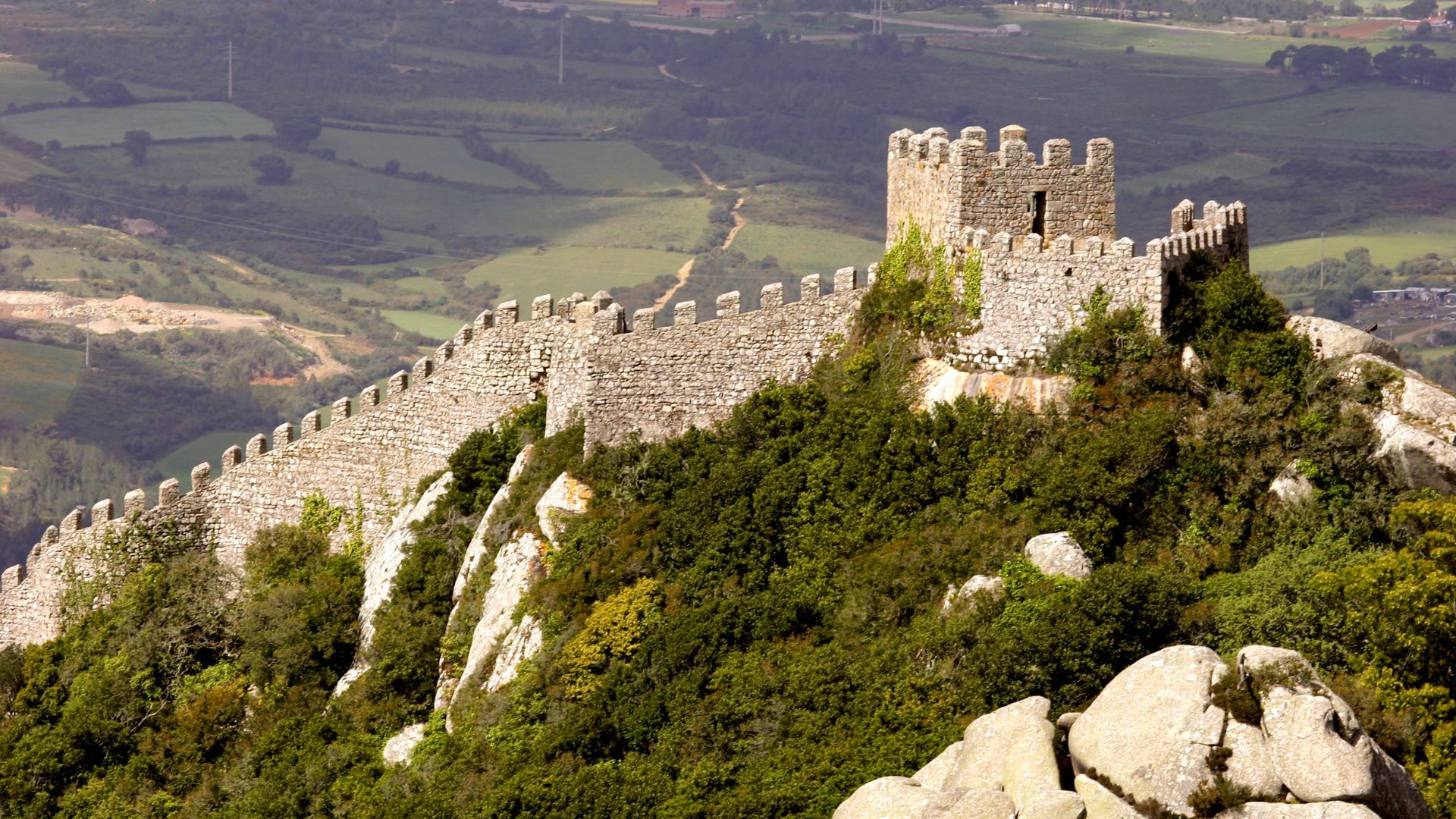
Gothic Architecture and Batalha Monastery
Batalha Monastery completely blew me away. Its spires reach for the sky—a true showpiece of Gothic architecture.
The lace-like stonework and flying buttresses made me snap dozens of photos.
Built to honor a Portuguese victory in 1385, the monastery took over a century to finish.
Key highlights I found unforgettable:
- The Founder’s Chapel, with its intricate tombs
- The Unfinished Chapels, open to the sky
- Stained glass that glows gold and crimson
Walking the cloisters, I felt surrounded by whispering silence and the cool chill of carved limestone. Batalha isn’t just a monument—it’s a masterpiece and a symbol of Portugal’s faith, creativity, and fierce independence.
Romanesque Clergy: Sé de Braga and Évora Cathedral
After Gothic drama, I found myself drawn to Romanesque solemnity. The Sé de Braga in northern Portugal struck me with its solid walls and arched doorways.
Inside, a peaceful quietness made it feel miles away from city bustle.
In Évora, the cathedral stands near the famed Roman Temple. I wandered historic streets past ancient columns, then climbed up to the cathedral’s rooftop.
From there, red-tiled roofs stretched to the horizon. The church’s thick columns and fortress-like towers are classic Romanesque.
Both Sé de Braga and Évora Cathedral showed me how faith shaped medieval Portugal—not just in grand gestures, but in everyday life. These places served as houses of worship and anchors for their towns, connecting past to present in stone and spirit.
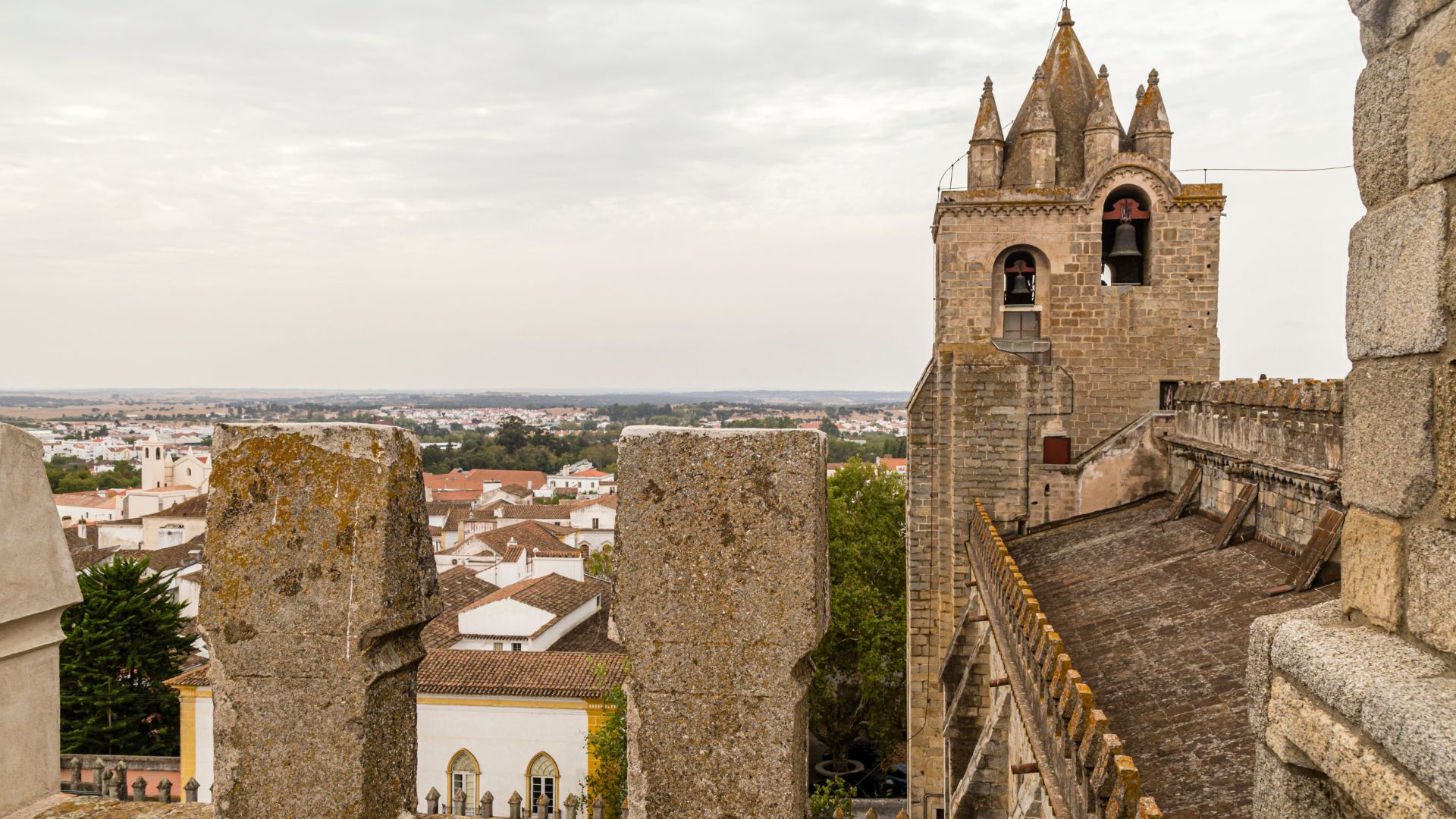
The Glory of Manueline Marvels
Central Portugal’s Manueline style creates moments of real awe. Lavish details, creative stonework, and strong ties to Portuguese history make these sites some of the most striking places I’ve visited.
Jerónimos Monastery: Masterpiece of the Age of Discovery
Stepping into Mosteiro dos Jerónimos in Lisbon, I felt breathless. The monastery feels less like a building and more like a monument to Portugal’s golden Age of Discoveries.
King Manuel I commissioned it, and it’s closely linked to Prince Henry the Navigator. It’s a testament to what ambition and artistic vision can achieve.
The cloisters are a wonder—carved ropes, twisted columns, sea monsters, and botanical motifs, all in creamy limestone. The Manueline style’s mix of late Gothic and Renaissance is obvious in every scalloped arch and decorated door.
I recommend pausing along the walkways to watch sunlight hit the stonework—it makes the carvings look almost alive.
Don’t miss the Church of Santa Maria, where Vasco da Gama’s tomb lies surrounded by more stone lacework. Visiting the monastery helped me understand how Portugal’s explorers and royalty celebrated their achievements through architecture.
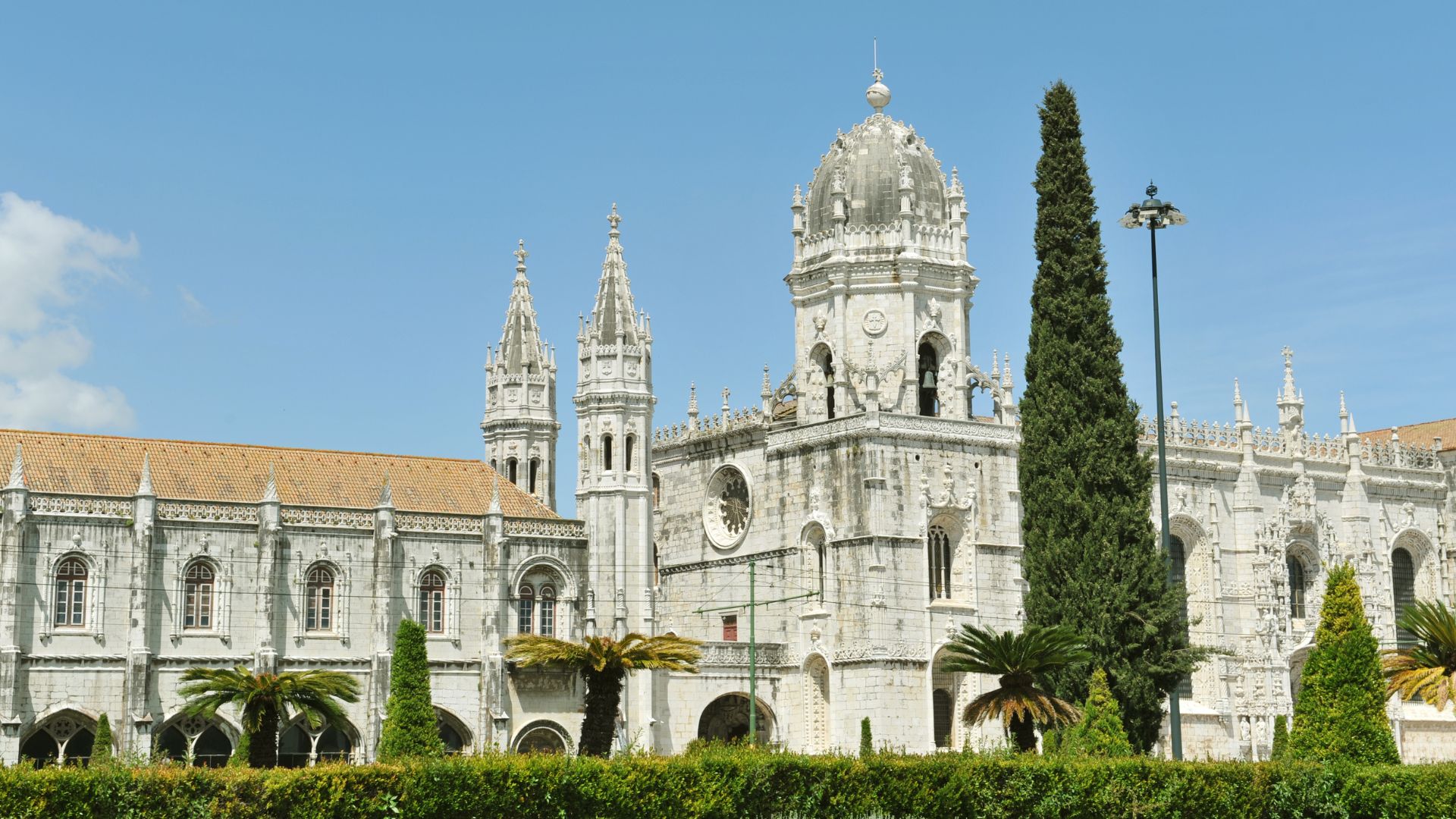
Tower of Belém and Maritime Motifs
A short stroll from Jerónimos Monastery, the Tower of Belém (Torre de Belém) rises above the Tejo River. The Manueline style here feels playful, bold, and deeply tied to the sea—the lifeblood of the Age of Discoveries.
I traced the rope-like carvings along the tower’s walls, spotted armillary spheres (Portugal’s symbol of exploration), and saw crosses of the Order of Christ. Maritime motifs are everywhere—anchor chains, twisted ropes, carved shells—making the tower a tribute to explorers who set sail from these shores.
The lower bastion, shaped like a ship’s prow, faces the river as if ready for a new journey.
Climbing the spiral staircases, I got views over Belém and the water that are hard to beat. It struck me how architecture captured the adventurous spirit of an era.
Tomar, the Order of Christ, and Late Gothic Flourishes
The Convento de Cristo in Tomar brought another chapter of Portugal’s story into focus for me. Once home to the powerful Order of Christ (descended from the Knights Templar), Tomar’s Manueline marvels blend military strength with creative detail.
The highlight for me was the famous Chapter Window—one of the finest pieces of Manueline design anywhere. Tangled ropes, carved foliage, and naval symbols seem to grow right out of the stone.
Gothic roots show in the pointed arches and ribbed vaults, but every inch is reworked with a new, seafaring energy.
Exploring Tomar, I kept seeing how the Manueline style turned solid stone into something intricate and expressive. It ties together the dreams of explorers, the hopes of kings, and centuries of craftsmanship—making it a must for any history or architecture lover.

Vibrant Cities and Timeless Streets
I came to Portugal’s center for the scenery, but what kept me here was how each city felt alive with ancient stones and stories. Grand rivers, buzzing neighborhoods, and history always close at hand made the region unforgettable.
Lisbon: From Lisbon Cathedral to Carmo Convent
Lisbon’s mix of architectural wonders impressed me at every turn.
Lisbon Cathedral stands with its sturdy Romanesque towers and cool stone interior. Stepping inside, I felt like I’d gone back in time.
Locals gathered on the steps, and the echo of old prayers seemed to linger in the thick stone walls.
Up the hill, I found the haunting ruins of the Carmo Convent. The roofless arches are a reminder of the 1755 Lisbon earthquake that changed the city forever.
Now open to the sky, this monument mixes tragedy with resilience. Inside, a small museum holds bits of Lisbon’s layered past—from Gothic tombs to medieval artifacts.
Lisbon’s streets aren’t just relics. Modern highlights like the MAAT museum—with its striking curves by the river—and the sleek Vasco da Gama Bridge show the city’s evolving style.
This blend of old and new made every ramble through Lisbon feel like a treasure hunt.
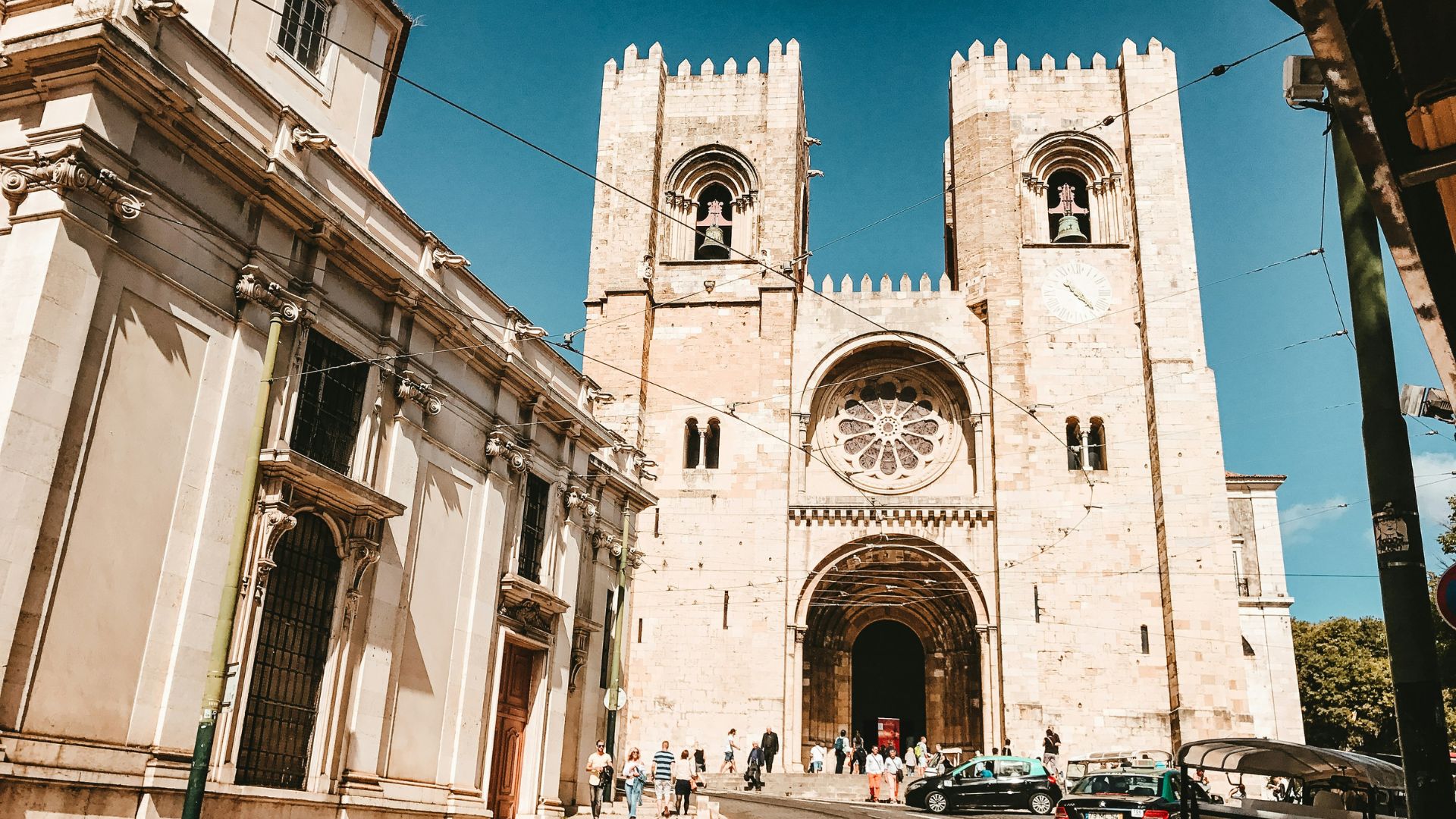
Porto’s Ribeira District and Douro River Heritage
Porto just swept me up with its riverside energy in the Ribeira District. These colorful old houses lean into each other above narrow cobblestone streets.
Locals filled outdoor cafés, chatting and laughing, while kids darted around by the water’s edge. I crossed the Dom Luís I Bridge and got these sweeping views of the city and the shimmering Douro River.
I started to understand how the Douro Valley shaped Porto’s soul, with terraced vineyards rolling right down to the river. Sipping port wine on the riverbank, I felt like I could taste centuries of tradition in one glass.
The district hums with today’s bustle, but you can almost hear stories of merchants, sailors, and craftsmen from long ago. That mix of old and new feels pretty special.
Porto’s modern side surprised me too, especially the Casa da Música. This bold concert hall stands in sharp contrast to the city’s old stone buildings.
Walking inside, I saw how Porto really celebrates both heritage and innovation.
Coimbra and the Storied University
Coimbra weaves history into its hills and along the riverbanks. At the center, the University of Coimbra stands as one of Europe’s oldest.
The grand Joanina Library almost didn’t seem real, with its gilded woodwork and ancient books stacked up to ornate ceilings. Every corner of campus echoed with tradition.
Students in black robes hurried up stone steps, worn smooth by centuries of feet. The towers and courtyards smelled faintly of orange blossoms, and you can almost hear the whispers of old lessons in the breeze.
Away from the university, Coimbra charmed me with Fado music drifting out of quiet taverns. The city’s riverbanks and stone alleys might seem quieter than Lisbon or Porto, but they’re just as packed with living history and beauty that never really fades.

Distinctive Details: Art, Materials, and Modern Flourishes
Central Portugal’s history pops out in its artistic details, clever building materials, and the way old and new blend together. Hand-painted tiles, bold architecture—there’s a lot to spot if you’re looking.
Azulejos: Portuguese Art and Iconic Tiles
I keep catching myself staring at walls covered in azulejos when I walk into a train station or chapel. These intricate, glazed ceramic tiles aren’t just decoration; they tell stories about Portuguese life, religion, and history.
Some tiles show scenes from the Renaissance. Others capture daily life, saints, or famous battles—there’s always something new to spot.
Azulejos line the halls of Faro Cathedral and pop up on fountains and walls throughout Guimarães. Blue and white dominate, but sometimes you’ll see golden yellows or emerald greens.
When sunlight hits these tiles in places like the Quinta da Regaleira gardens, the effect feels almost magical. The patterns look stunning and even help keep buildings cool in the summer.
I love how locals still use azulejos in modern homes, connecting past and present through design.
Cork and Oak: The Natural Wonders of Construction
Central Portugal really makes the most of its environment, especially the cork tree and oak forests. In the Algarve and farther north, cork trees grow wild and steady.
People carefully harvest the bark every few years, and Portugal leads the world in cork production. Cork doesn’t just end up in wine bottles.
I’ve spotted it as floor tiles, wall insulation, and even quirky handbags at market stalls. Shops in Guimarães and Madeira are full of cork goods.
The material feels soft, light, waterproof, and it’s eco-friendly too. Oak, meanwhile, gives tough wood for beams, doors, and those old church pews that creak when you sit.
While exploring the Chapel of Bones (Capela dos Ossos), I noticed oak details holding up the ancient structure. These natural materials keep buildings in central Portugal sturdy and sustainable.
From Baroque Basilicas to Modern Marvels
I’ve always been amazed by how Portugal blends baroque, renaissance, and modern architecture. When you step into a baroque basilica—say, one tucked away in Guimarães—you stand beneath gilded woodwork and dramatic arches.
Ceiling frescoes stretch overhead, and there’s this undeniable sense of grandeur. That south European flair? It’s unforgettable.
Modern architecture borrows from tradition but shakes things up with glass, steel, and reinforced concrete. You’ll spot the sleek lines in Faro Cathedral’s newer wings, or maybe catch the creative vibe of those limestone grottoes along the coast.
This mix gives Portugal a skyline like nowhere else. Sometimes a centuries-old chapel sits right next to a bold, modern museum.
It just shows that Portugal honors its history but never gets stuck in the past. Every block—from the Algarve’s whitewashed homes to the sharp shapes in city centers—keeps tradition alive, always with a fresh twist.
